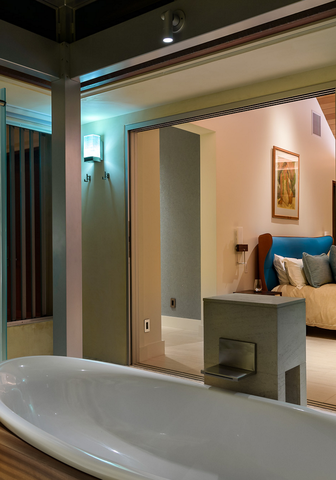[ad_1]
We know that balance is crucial in life. Not just in the physical sense of walking in a straight line – work-life balance and environmental balance are essential for our health and wellbeing.
Similarly, when you think about lighting your home interiors, it may be helpful to keep the concept of balance in mind whilst creating your lighting scheme.
The need for balance is being embraced by greater numbers of architects and interior designers every day, and these professionals are starting to really focus on how important light balance is to the look and feel of the home environment.
The evolution of architecture
Architecture has moved from the subjective pursuit of beauty towards a more psychological approach, which considers how the built environment impacts our feelings and emotions, how the environment we live in impacts how safe and comfortable we feel, and how all of this goes on to impact our productivity and our long-term health and wellbeing.
When we think in these terms, lighting isn’t just some accessory we install when the walls and ceilings are built, it is a key component in creating a holistic visual aesthetic. Lighting is integral to our experience of a given place, and governs our feelings of security and enjoyment.
Lighting helps us to maintain good health by keeping us oscillating between wakefulness and sleep, keeping our circadian rhythms in balance. Research into how the “master clock” inside our bodies works suggests that greater exposure to white light in the day is associated with better sleep quality at night. This is something that architects and designers are increasingly keeping front of mind in their designs, helping us to get more natural light in the day, and considering how to adjust levels of light as we enjoy our homes in the evenings.

Balancing types of lighting
We’ve heard it said that lighting designers are also “darkness designers”. Choosing which objects and areas to light, and which to leave dark, partially lit, or in reflected light, is all part of the job.
The colour palette and contrast within the room are of great interest, as a room with darker walls or one that’s positioned away from the sun for most of the day will need more artificial light.
You can also use a “layered” lighting scheme to create a balance, and this is usually done across three main types of lighting:
- ambient light (the daylight from your windows, and artificial light from ceiling lights, recessed lighting and some wall lights)
- direct light (used in tasks and creates a sharp shadow, it may come from lamps, pendant lights or vanity lights)
- and accent lighting (novelty lights, fairy lights, or lights which illuminate wall hangings or foliage)
These are the main layers of lighting to use in your scheme, but you should also consider how light will be reflected in mirrors and against walls. Consider how a spotlight can be used to “bounce” reflected light off of walls in order to open out a space or create a welcoming atmosphere.
Jeff Fuller, director of Gwyn Carless at The Light Yard, comments: “Getting the right balance of light isn’t so difficult to achieve, but there are a few points you should be aware of before you get started. One is to always make sure the colour temperature (marked as Kelvin or K) of all the lights in a room are the same, and that the lumens of the light sources are also similar throughout the room; this alone will help to create a balanced effect.
“When you’re designing a lighting scheme for a bathroom, for example, try to use different types of lights such as some discreet recessed downlights in the ceiling for general ambient lighting along with a couple of mirror wall lights and a pendant light cluster to add a statement and focal point.
“I would always recommend all the lights are on a dimmer system as it’s remarkable how much the mood in a bathroom can be drastically altered by simply dimming the lights down low – and this is another way of creating balance which is needed once the natural light coming through the windows has gone.”
For more lighting design tips and advice, follow Gwyn Carless at the Light Yard via our social channels: Facebook, Twitter, Instagram and LinkedIn.
[ad_2]
thelightyard.com










